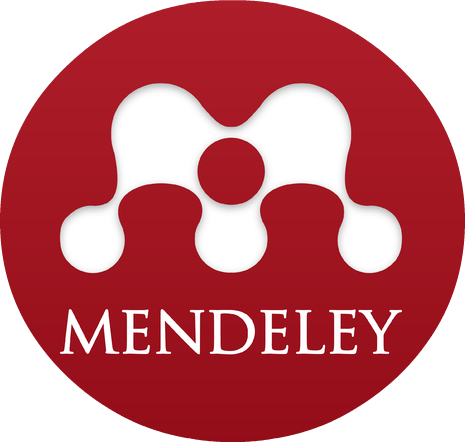Al-Thiqah: Journal of Hadith and Prophetic Tradition accepts articles in Indonesian or English that are relevant to Islamic studies from various approaches, both theoretical and practical. Submitted articles must be original, have never been published, and are not in the process of being reviewed in other journals. Manuscript writing must follow the following systematics and technical provisions:
1. Title and Author Identity
The title of the article is written in Indonesian or English in a clear, informative manner, with a maximum of 20 words, and reflects the substance of the article. Avoid using abbreviations. The font used is Cambria 14 pt, capital letters, bold, and single-spaced (1).
The author's full name is written without academic title (Cambria 13 pt, bold, single space), followed by the full affiliation (institution, city, country, and postal code), and email address (Cambria 11 pt, single space).
2. Abstract
The abstract is written in two languages (English and Indonesian), each 200–250 words long, using Cambria 11 pt font, single spacing. The abstract must include background, objectives, methods, results, and conclusions.
Keywords: List 3–5 keywords that reflect important concepts of the article, separated by semicolons (;).
3. Article Structure
The length of the article ranges from 6000–8000 words, including all elements such as title, abstract, citations, and bibliography. The article is typed on A4 paper, using Cambria 12 pt font, 1.15 spacing (except direct quotations using 1 spacing), with normal margins.
The main structure of writing includes:
-
Introduction: Describes the general context, background, relevance, urgency, literature review (minimum five previous studies), problem formulation, research objectives, and research contributions or novelty. Maximum length 1000 words.
-
Method: Describes the research approach and type, data collection and analysis techniques, location, instruments, validity and reliability, and supporting tools used systematically and chronologically.
-
Results and Discussion: Present findings objectively in the form of narratives, tables, or images. The discussion must analyze the results with theoretical references and previous research and their relevance to the formulation of the problem.
-
Sub Topics (if necessary): Allows for dividing the discussion into specific sub-topics that support the clarity of the analysis.
-
Conclusion: Summarizes the main conclusions, presents theoretical and practical implications, research limitations, and suggestions for future research.
4. Table, Figure, and Citation Formats
-
Tables and figures are numbered (Table 1, Figure 1, etc.) with titles in 10 pt Cambria font, single spacing.
-
The Arabic font in the table uses Traditional Arabic 12 pt.
-
Writing Arabic letters in text uses Traditional Arabic 16 pt, 1 spacing.
-
All Arabic terms other than names must be transliterated according to the Indonesian Ministry of Religion's Arabic-Latin transliteration guidelines.
-
Direct quotes are typed with 1 line spacing and indented paragraphs.
5. Bibliography
The bibliography contains at least 20 relevant primary and secondary sources, published in the last 10 years, except classic books. References are written in APA 7th Edition style, including: author's name, year, title, source, volume/edition, and official link if online. The list is arranged alphabetically by the last name of the first author. All in-text citations must be listed in the bibliography, and vice versa.
6. Examples of Citation Styles
In traditional societies, especially among Muslims, receiving guests and honoring them is considered a form of high piety. In various regions, the culture of entertaining guests with the best dishes is a tradition that has been passed down from generation to generation. Honoring guests is considered part of a social obligation, which must be done as a form of respect, brotherhood, and hospitality (Nurfaizi et al., 2024). However, in this modern era, there has been a significant change in the way people view guests and how they honor them. Globalization and modernization have changed patterns of social interaction and influenced people's values and habits, including in terms of honoring guests. An increasingly busy lifestyle, technological developments, and a culture of individualism that is increasingly strong have made social interaction increasingly limited (Subhan, 2022). Honoring guests, which was previously considered a form of devotion to Allah and noble morals, is now often considered a burden or an activity that interferes with daily routines (Hidayat et al., 2022).
7. Example of Bibliography
Al-‘Asqalānī, A. bin ‘Alī bin Ḥajar. (1970). Fatḥ al-Bārī. al-Maktabah al-Salafiyyah.
Al-Bukhārī, A. ‘Abdillāh M. bin I. (1993). Ṣaḥīḥ al-Bukhārī (M. D. Al-Bugā (ed.)). Dār Ibnu Kaṡīr.
Al-Gazālī, A. Ḥāmid M. bin M. (2009). Iḥyā’ ‘Ulūm Al-Dīn (M. Zuhri, M. Mochtar, & M. Misbah (eds.)). CV. Asy Syifa’.
Nurfaizi, M., Rahardja, A., Fahrudin, F., Rambe, A. A., & Dwietama, R. A. (2024). Pendidikan Akhlak Memuliakan Tamu dalam Qs. Al-Ẓāriyāt/ 51: 24-31: Urgensi dan Metode Pendidikan Akhlak Anak Usia Dini. Kiddo: Jurnal Pendidikan Islam Anak Usia Dini, 5(1), 24–31. https://doi.org/10.19105/tjpi.
Subhan, S. (2022). Globalisasi dalam Perspektif Pendidikan Agama Islam dan Sosial Masyarakat (Studi Kasus di Kabupaten Bima). Ainara Journal (Jurnal Penelitian Dan PKM Bidang Ilmu Pendidikan), 3(3), 251–258. https://doi.org/10.54371/ainj.v3i3.194.
Hidayat, A. F., Surana, D., & Hayati, F. (2022). Analisis Pendidikan tentang Akhlak Memuliakan Tamu terhadap Al-Quran Surat Adz-Dzariyat Ayat 24-27. Bandung Conference Series Islamic Education, 2(2), 297–304. https://doi.org/10.29313/bcsied.v2i2.3317.



